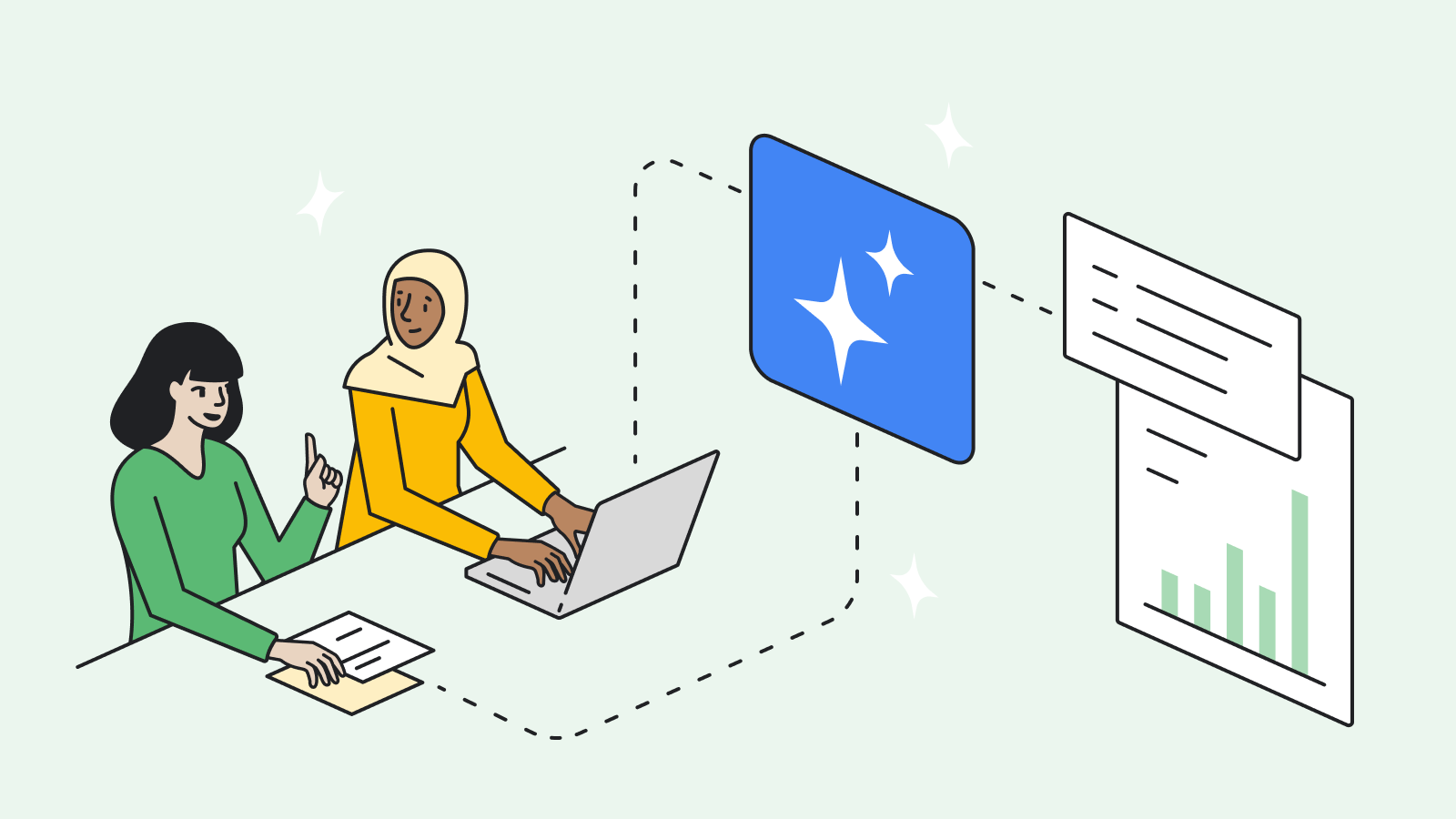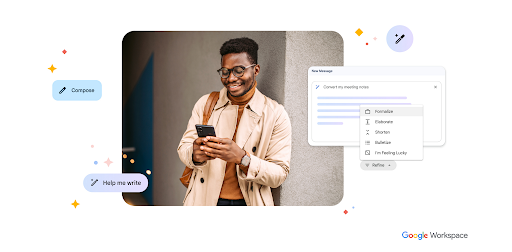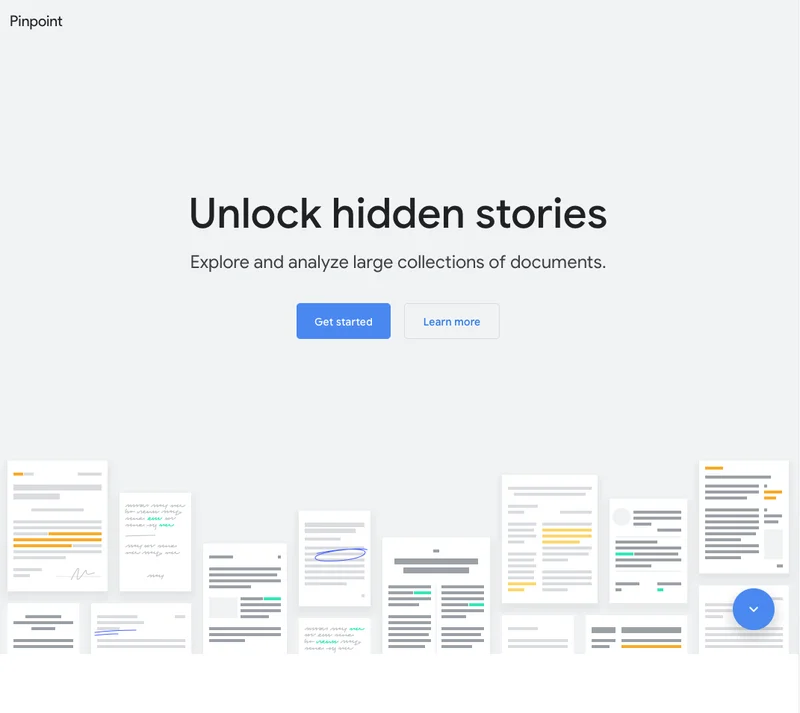- chevron_left Alle Kurse
Introduction to AI for News Business Teams

Learn about Google's approach to AI and how our products can support news business teams.

Lesson Overview
![[Website] AI Graphic for Lessons (GNI)](https://storage.googleapis.com/media-newsinitiative/images/Website_AI_Graphic_for_Lessons_GNI.original.png)
This lesson provides a brief overview of Google's approach to AI - and shares guidance for how news organizations' business teams can make use of Google's AI products.
We also offer a separate lesson for journalists.
“We believe that AI is a foundational and transformational technology that will provide compelling and helpful benefits to people and society through its capacity to assist, complement, empower, and inspire people in almost every field of human endeavor.“ - Kames Manyika, Jeff Dean, Demis Hassabis, Marian Croak and Sundar Pichai
Learn more: ai.google/why-ai/
For more lessons, visit our trainings page.
![[Website] AI Graphic for Lessons (GNI)](https://storage.googleapis.com/media-newsinitiative/images/Website_AI_Graphic_for_Lessons_GNI.original.png)
History of AI

“I propose to consider the question, Can machines think?” So opens Alan Turing's paper, '"Computing Machinery and Intelligence," a landmark 1950 text that inspired early conversations about Artificial Intelligence.
The world of AI has evolved greatly over the past seven decades. Below are several key milestones and eras in that history:
1950s - Dreaming
Early AI research explored the possibility of creating machines that could think like humans.
1960s - Logic
Logical systems that could solve problems in a rule-based manner were introduced.
1990s - Data
Machine learning algorithms, which can learn to perform tasks without being explicitly programmed, emerged.
2010s - Learning
Machine learning experts developed algorithms inspired by the human brain, which we call “neural networks.”
2017 - Generative AI
A Google development, the Transformer, led to a significant development in Gen AI. The transformer model is a neural network that learns context and thus meaning, by tracking relationships in data like the words in this sentence.

What is Generative AI?
We should begin by defining what we mean by “Generative AI” and how it differs from concepts that preceded it. Below are a few definitions of key terms.
Artificial intelligence (AI) is a general phrase for a set of technologies – including Machine Learning and Generative AI – that enable computers to perform a variety of advanced functions, including the ability to see, understand and translate spoken and written language, analyze data, make recommendations, and much more.
A type of AI, “Machine Learning” refers to specific applications that use data to train a model to perform a given task independently and learn from experience. See our full Introduction to Machine Learning course or watch this video for more information.
Generative AI is a term referring to AI solutions capable of generating new information, such as text, images, videos and sounds.
GenAI solutions are typically based on Large Language Models (LLMs). LLMs are a type of probability engine, a statistical model to predict the likelihood of every possible outcome based on an input.
"My favorite color is..." and the LLM could come back with "red," "blue," or "purple" based on the most probable answer in its trained data set.
In simple terms, this is Gen AI. It has taken an input and generated an output.
To summarize, Generative AI is…
- Technology that assists in complex tasks
- Technology that boosts human capabilities
- A replacement for remedial or redundant tasks (automation)
… but is not:
- A sentient being
- A magic bullet
- The answer to every problem
- A replacement for human intelligence
Google’s AI Principles
Google is optimistic about the potential of AI, but we recognize that advanced technologies can raise important challenges that must be addressed clearly, thoughtfully, and affirmatively. In tackling these challenges a set of principles was developed:
- Be socially beneficial.
- Avoid creating or reinforcing unfair bias.
- Be built and tested for safety.
- Be accountable to people.
- Incorporate privacy design principles.
- Uphold high standards of scientific excellence.
- Be made available for uses that accord with these principles.
For more see ai.google/responsibility/principles
Gen AI in Google Search

Google has been using Generative AI in our best-known product, Google Search, for years. For instance, the “autocomplete” feature predicts your search query as you type. And Google continues to test bringing new Generative AI capabilities to Search.
AI-Generated Content in Search Results
How automated content is treated by content creators: Generative AI is increasingly used by content creators, and Google continues to evolve our systems to present helpful, reliable information produced by many types of creators.
Automation has long been used to generate helpful content, such as sports scores, weather forecasts, and transcripts. AI has the ability to power new levels of expression and creativity, and to serve as a critical tool to help people create great content for the web.
How automated content is treated in Search rankings: Google’s search guidelines spell out how AI-generated content is treated in our rankings. In short, appropriate use of AI or automation to produce content is not against our guidelines. However, publishers should avoid using automation to generate “spammy” content that does not serve to help Internet users.
How news organizations can comply with Google’s policies:
- Read Google Search’s guidance about AI-generated content: In this post on Google Search Central, we share guidance on how Search rankings work – and how automated content is treated in different circumstances.
- Consider these questions about automated content: Google encourages publishers to evaluate at least three questions when evaluating how Search might treat the use of automation in a specific instance:
- Is the use of automation, including AI-generation, self-evident to visitors through disclosures or in other ways?
- Are you providing background about how automation or AI-generation was used to create content?
- Are you explaining why automation or AI was seen as useful to produce content?

Gen AI in Google Ads
AI in Google Search Ads:
Google Ads are an effective way for many publishers – including news organizations – to promote their coverage, introduce their brand to audiences, and monetize content. And Generative AI is making it easier to develop effective campaigns.
How Generative AI is incorporated:
Generative AI can help your organization create better and faster ads, using a feature called “automatically created assets,” or ACA. This feature uses content from your landing page – which is typically a homepage or article page for a news organization - to generate headlines and descriptions.
How news organizations can get started:
- To get started with this feature, you will need to have a Google Ads account. You can sign up for one here.
- Once you’ve created a campaign, go to the settings for that campaign and look for “Enable automatically created assets” in the Recommendations page.
Gen AI in Google Workspace

Many teams – including news publishers – use Google Workspace to collaborate and enhance their productivity.
How Generative AI is incorporated: In May 2023, Google announced that Generative AI features had been added to a number of Google Workspace products, including Gmail, Docs, Sheets, and Slides. A feature called Duet AI acts as a “real-time collaborator,” helping users draft emails, create presentations, improve spreadsheets, and more.
How news organizations can get started: If your publication is interested in a free trial of the Duet AI feature – or other products in Google Workspace that rely on generative AI – you can request a demo by completing this short form. For more advanced news organizations, Google Cloud provides a range of AI-based offerings.

-
Google Fact Check Tools
LektionThese tools allow you to search for stories and images that have already been debunked and lets you add ClaimReview markup to your own fact checks.Von Ihrem Konto entfernenIn Ihrem Konto speichernNone -
Pinpoint: A research tool for journalists
LektionExplore and analyze thousands of documents with Google's research tool, Pinpoint.Von Ihrem Konto entfernenIn Ihrem Konto speichernNone -
Introduction to Google Earth Studio
LektionEin voll funktionsfähiges Animationsstudio für Google Earth-Bilder.Von Ihrem Konto entfernenIn Ihrem Konto speichernNone








